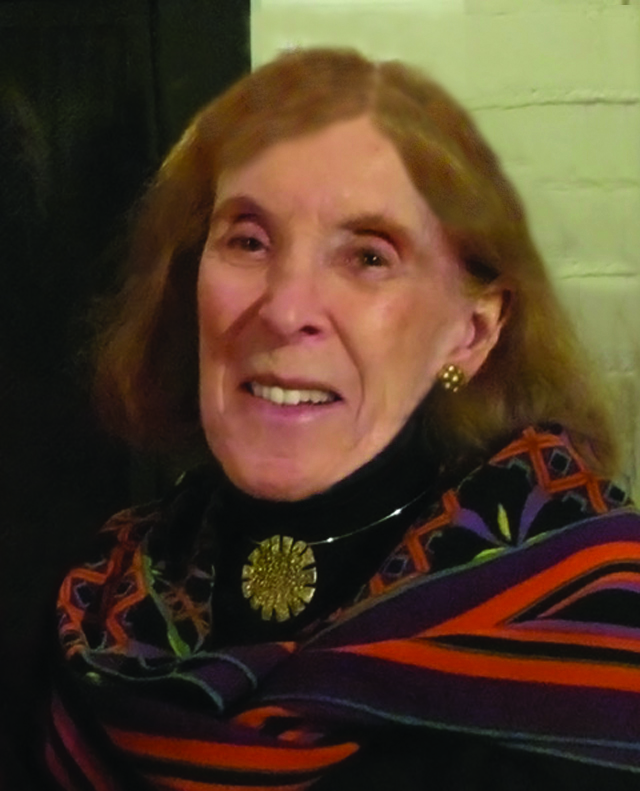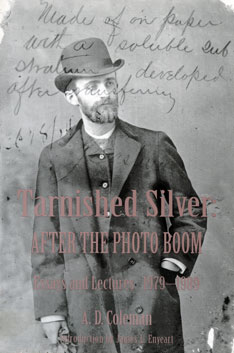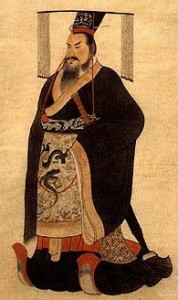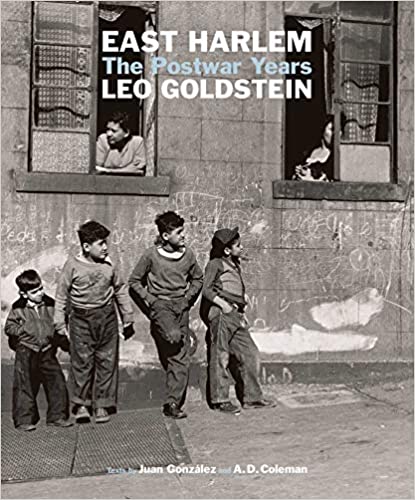 Pandemic notwithstanding, life around these parts continues apace, with the day-to-day new normal not all that much different from the pre-COVID-19 era.
Pandemic notwithstanding, life around these parts continues apace, with the day-to-day new normal not all that much different from the pre-COVID-19 era.
I do my best to obey the sensible advisories: regular washing of hands, wearing a mask whenever near others, etc. The masking doesn’t often prove necessary, as I don’t find myself in public situations frequently nowadays. A weekly trip to the bank, an occasion trip to the supermarket or post office. Even before the virus struck my socializing had fallen off — professional situations involving others (conferences, lectures, panels) had become relatively infrequent, travel for same even more so. Which I didn’t mind.
Thus this hasn’t required much of an adjustment — just the addition to my routines of a few precautions. As a result, I don’t have the feeling of missing (or missing out on) something I once took for granted and the absence of which I mourn. I could go on like this indefinitely.
However, in my ongoing effort to get with the program I have renewed my engagement with social media, revving up my previously moribund accounts at Twitter (@ADColeman1) and LinkedIn (A. D. (Allan) Coleman), and initiating a new one at Instagram (adcoleman_photocritic). And I’m enjoying it, sort of — I’ve had some nice exchanges with old friends, and made a few new acquaintances. Consider me not hopelessly old-school.
•
Cynthia Navaretta (1923-2020): A Farewell
Cynthia Navaretta died on May 18 at her home in Manhattan at the age of 97.
 I knew Cynthia from the New York art scene, in which she was a fixture by the time I stepped into it in the late 1960s, but I also knew her as one of my publishers. Aside from the fact that we liked and respected each other, I never figured out exactly why Cynthia decided to put her imprint a book of my essays, Tarnished Silver: After the Photo Boom, in 1996. Midmarch Arts Press, the independent press she founded in 1979 and ran out of her Riverside Drive apartment, with few exceptions concentrated on books by or about women artists, the subject to which she devoted her life.
I knew Cynthia from the New York art scene, in which she was a fixture by the time I stepped into it in the late 1960s, but I also knew her as one of my publishers. Aside from the fact that we liked and respected each other, I never figured out exactly why Cynthia decided to put her imprint a book of my essays, Tarnished Silver: After the Photo Boom, in 1996. Midmarch Arts Press, the independent press she founded in 1979 and ran out of her Riverside Drive apartment, with few exceptions concentrated on books by or about women artists, the subject to which she devoted her life.
One of the exceptions (though not entirely) came in the form of a compendium titled Mutiny in the Mainstream, which compiled transcripts of panels and other public dialogues engaging the various art movements and upheavals of the 1960s and ’70s, in which I make some brief appearances. She also issued photo historian Peter Palmquist’s two-volume anthology, Camera Fiends & Kodak Girls: Fifty Selections by and About Women in Photography.
![]() Cynthia began publishing Women Artists Newsletter in 1975. This evolved into a journal, Women Artists News, to which, in 1996, I contributed a two-part essay, “‘Porn,’ Polls and Polemics: The State of Research on the Social Consequences of Sexually Explicit Material.” Furthermore, we had a good friend in common, Douglas Sheer of Artists Talk On Art, on the board of which Cynthia served for some years. In any case, on some now-forgotten occasion (an ATOA panel or College Art Association conference, perhaps), we found ourselves chatting and, with those titles in mind, I asked if she’d consider publishing a book of mine. When she responded enthusiastically, I sent her a proposal, and Tarnished Silver resulted. I suppose it had enough commentary on women photographers and gender issues that she figured it didn’t not fit in her line of books, while giving her another title relating to photography.
Cynthia began publishing Women Artists Newsletter in 1975. This evolved into a journal, Women Artists News, to which, in 1996, I contributed a two-part essay, “‘Porn,’ Polls and Polemics: The State of Research on the Social Consequences of Sexually Explicit Material.” Furthermore, we had a good friend in common, Douglas Sheer of Artists Talk On Art, on the board of which Cynthia served for some years. In any case, on some now-forgotten occasion (an ATOA panel or College Art Association conference, perhaps), we found ourselves chatting and, with those titles in mind, I asked if she’d consider publishing a book of mine. When she responded enthusiastically, I sent her a proposal, and Tarnished Silver resulted. I suppose it had enough commentary on women photographers and gender issues that she figured it didn’t not fit in her line of books, while giving her another title relating to photography.
Tarnished Silver actually consisted of the essays that I had eliminated from a sprawling, unwieldy aggregation of previously published work that I’d assembled. Following the advice of several astute readers, I narrowed that unpublishable collection down to a volume half its size, consisting mostly of longer essays that fell into a mode that I would call scholarly (as distinct from academic); most involved research, and footnotes. This became the book I published with the University of New Mexico Press in 1998 under the title Depth of Field: Essays on Photography, Mass Media and Lens Culture.
But the material that I eliminated in order to carve out that coherent chunk I considered substantial and worth preservation in book form. So I re-thought its organization, found a new title for it, and gave that to Cynthia as my proposal. To my delight, she accepted.
The editorial process she turned over to a frequent collaborator of hers, the late Judy Siegel, who, to put it mildly, was not a fan of mine and made it way more painful that necessary. (I actually had to fight with Siegel to prevent her from altering a quote from James Baldwin to conform to then-trending politically correct gender usages. And yes, since you ask, I have the receipts.)
 Still, in the end it came out the way I intended it to, appearing in 1996 and winning an honorable mention in the Kraszna-Krausz awards from the U.K. Thanks to print-on-demand technology it remains available in hard-copy printed form after two conventional printings sold out — the only collection of my essays to date that you can still buy new from its publisher.
Still, in the end it came out the way I intended it to, appearing in 1996 and winning an honorable mention in the Kraszna-Krausz awards from the U.K. Thanks to print-on-demand technology it remains available in hard-copy printed form after two conventional printings sold out — the only collection of my essays to date that you can still buy new from its publisher.
Cynthia and I talked after that about a follow-up volume; I even gathered the raw edit for it, and we agreed tentatively on its shape and contents. Yet somehow we never got that into the pipeline — likely the dropping of the ball falls on me.
You’ll find Cynthia’s ARTnews obituary here, and her New York Times obit here.
•
Hail to the Thief
Hey, awhile back I got a personal letter from Prezzie Drumpf! With my name spelled right! Dated 4/29, arrived 5/18, so it took three weeks to get here! We are “wag[ing] total war on this invisible enemy” & will “triumph yet again”! We will teach this virus a lesson it will never forget! His signature uses more black ink than the entire rest of the letter! I will treasure this forever!
•
Speaking of whom, as I wrote in a 2012 post on another subject entirely,
“[T]he Chinese Communist Party seems bound to some of China’s ancient traditions. The ‘burning of the books and burying of the scholars’ innovated by [China’s] first emperor, Qin Shi Huang (259 BC-210 BC), remain the CCP’s methods of choice for controlling the thought of the population. Worth remembering, too, that when Emperor Chin died during one of his tours of Eastern China, his Prime Minister, Li Si, concerned that the news of his death might set off a revolution, devised a stratagem to convince people that the ruler still lived. He ordered two carts full of rotten fish to parade just ahead of and behind the Emperor’s carriage, in which his body sat decomposing in the late-summer heat, to disguise the smell of his deliquescing cadaver.”
The Trump cabal has instituted its own versions of “the burning of the books and burying of the scholars.” So, as his presidency and his regime collapse over the coming months, watch for the carts and prepare to hold your nose.
•
Revising Revisionism
Polygraph.info is a fact-checking website produced by Voice of America (VOA) and Radio Free Europe/Radio Liberty. I read with interest this May 8, 2020 report there by Fatima Tlis: “30 Years After Admitting WWII Massacre of Polish POWs, Katyn Memorial Plaques Removed in Russia.”
![]() I actually wrote about that massacre in Tver (known as Kalinin in the Soviet era) back in August 2011, in relation to the opening of a new art center in Tver as part of an effort to make the former industrial region a contemporary art destination.
I actually wrote about that massacre in Tver (known as Kalinin in the Soviet era) back in August 2011, in relation to the opening of a new art center in Tver as part of an effort to make the former industrial region a contemporary art destination.
Perhaps we should consider the denial of history an art form, practiced everywhere. Then those hoping to attract art tourists to Tver could make this instance thereof a prominent feature of that program, connecting it to the notorious “vanishing commissar” of Soviet-era photography and other Soviet, pre-Soviet, and post-Soviet masterpieces of the form.
•
Forgot to mention that I wrote the introduction to the 2019 monograph East Harlem: The Postwar Years by Leo Goldstein, edited by Régina Monfort and published by powerHouse Books last October. A Russian-born emigré, Goldstein was a late member of the left-wing Photo League (he joined it, notably, after it had gone onto the government’s blacklist).
For several years, starting in 1949, Goldstein photographed in the the largely Puerto Rican neighborhood of East Harlem (sometimes referred to as Spanish Harlem), working in the classic street photography/documentary mode. His negatives disappeared when he died and his studio got cleared out; what remains are a set of exhibition-quality prints he made himself, passed down to his son and daughter-in-law. The book consists of handsome reproductions of a representative selection of the imagery, plus a preface by Juan González and my essay.
•
I Needed to Know This
And maybe you do too:
“Procrastination isn’t a unique character flaw or a mysterious curse on your ability to manage time, but a way of coping with challenging emotions and negative moods induced by certain tasks — boredom, anxiety, insecurity, frustration, resentment, self-doubt and beyond.
“‘Procrastination is an emotion regulation problem, not a time management problem,’ said Dr. Tim Pychyl, professor of psychology and member of the Procrastination Research Group at Carleton University in Ottawa.”
See “Why You Procrastinate (It Has Nothing to Do With Self-Control),” by Charlotte Lieberman, New York Times, March 25, 2019.
Of course there’s a Procrastination Research Group. Founded 20 years ago, which explains why it has only recently issued these findings. As well as why I have only now gotten around to posting this announcement. And why I have belatedly nominated them for an Ig Nobel prize.
 But it turns out that there’s help to be had. Read “How to Procrastinate and Still Get Things Done” by John Perry, from the February 23, 1996 issue of The Chronicle of Higher Education, in which the author — with tongue only partly in cheek — describes and advocates an approach he calls “structured procrastination.”
But it turns out that there’s help to be had. Read “How to Procrastinate and Still Get Things Done” by John Perry, from the February 23, 1996 issue of The Chronicle of Higher Education, in which the author — with tongue only partly in cheek — describes and advocates an approach he calls “structured procrastination.”
Using this approach, one ranks the important tasks in play at a given moment, then puts off the most apparently urgent by addressing something further down on the list. Keep this up, he assures us, and, as new tasks rise to the top of the list, eventually anything once at the top will get done.
I have actually employed a less “structured” version of this technique for years, which explains why I have managed steady production over the past half-century. It never occurred to me that I could systematize my ad hoc postponements and achieve increased efficiency while still putting off till tomorrow what I could do today. My hat’s off to Perry, a professor of philosophy at Stanford University. Who said philosophy isn’t useful?
•
 Special offer: If you want me to either continue pursuing a particular subject or give you a break and (for one post) write on a topic — my choice — other than the current main story, make a donation of $50 via the PayPal widget below, indicating your preference in a note accompanying your donation. I’ll credit you as that new post’s sponsor, and link to a website of your choosing.
Special offer: If you want me to either continue pursuing a particular subject or give you a break and (for one post) write on a topic — my choice — other than the current main story, make a donation of $50 via the PayPal widget below, indicating your preference in a note accompanying your donation. I’ll credit you as that new post’s sponsor, and link to a website of your choosing.
And, as a bonus, I’ll send you a signed copy of my new book, poetic license / poetic justice — published under my full name, Allan Douglass Coleman, which I use for my creative writing.










Dear Allan, thank you for mentioning Judy Siegel. I had not seen her name in print for a very long time. We never met, but had a several year occasional email friendship before, during and after her work on alternative photography, a series she called Post-Factory Photography (may not be the exact title), essentially how-to-do-it chap books. It was a brilliant set, which I donated to a younger friend when I became unable to stand more than an hour in the darkroom. I think the last I heard from her was a package containing her book of photographs of wonderful T-shirts taken during a New York City march on behalf of women. Great Judy-like stuff! — Marty Magid
From Spring 1998 through April 2004 Judy Seigel published The World Journal of Post-Factory Photography, perhaps what you refer to here. These came in 8-1/2×11″ magazine format rather than chapbook form, but did contain a wealth of “alternative processes” information. You can get a free download of issue 1 by clicking here. You can order the other copies from her daughter Jessica by clicking here and scrolling halfway down.
Full disclosure: Issues 3, 5 and 6 contain commentary by Seigel on William Mortensen and my research on his erasure from photo history, along with my responses to Seigel’s attacks on Mortensen and myself. It surprised me to find Seigel so dismissive of both Mortensen and my efforts to rehabilitate him, given that for some three decades he was the highest-profile public voice anywhere in the world in support of the process experimentation so dear to Seigel’s heart. But there you have it.